牛国政
1955年出生于河南省宝丰县。
1974年知青下乡
1977年南海舰队服役
1980年到河南省平顶山市公安局工作至今。
1986年开始从事摄影工作。
1987年-1997年拍摄《收审所》 中国河南省
1993年-1996年拍摄《小煤窑》 中国河南省
1994年-1997年拍摄《练功》 中国河南省
1999年-2005年拍摄《矸石山》 中国河南省
2002年-2004年拍摄《梦境》 中国河南省
2004年-2006年拍摄《百花园》 中国河南省
2005年-2007年拍摄《工场》、《狼烟》 中国河南省
展览:
2013年9月,沈阳中国工业博物馆邀请展《小煤窑》.
2013年8月,云南大理国际摄影展,联展作品《矸石山》.
2012年4月,美国科罗拉多州阿斯彭市Resnick 画廊,联展作品《工场》.
2011年9月,北京三影堂画廊主题展《冰+煤》.
2010年6月 新加坡YAVUZ fineart画廊联展,参展作品《狼烟》.
2009年9月,郑州,河南艺术中心艺术馆联展《天花乱坠》.
2009年5月,北京宛平,中国纪实摄影大展,个展《中国式锻炼》.
2009年4月 北京全国农业展览馆新馆,艺术北京2009当代艺术博览会.
2008年12月,上海, 汉庭·新城视环保摄影联展.
2008年9月,上海全摄影画廊个人回顾展.
2008年3月, 美国休斯顿摄影节, 多媒体联展《煤在中国》.
2007年9月,山西平遥联展《天花乱坠》.
2005年12月,广东省连州市国际摄影展 , 个展《梦境》.
2005年9月 ,山西平遥,联展《城之欲》,参展标题《练功》.
2005年9月 ,山西平遥, 个展《标语》.
2003年9月, 山西平遥 , 《乡土中原》主题展,参展标题《矸石山》.
2002年10月,北京中国美术馆 ,联展《小煤窑上的打工仔》.
收藏:
2011年12月,《矸石山》作品入编中国摄影师协会《当代中国摄影百家典藏》
2009年 《练功》,中国广东美术馆,2幅。
2007年 《练功》,美国旧金山现代艺术博物馆,2幅;
《狼烟》2幅;
《矸石山》1幅。
2005年 《练功》,中国河南博物馆,4幅。
2005年 《梦境》,中国广东美术馆2幅;
《小煤窑》中国广东美术馆3幅。
Niu Guozheng
1955 Born in Baofeng, Henan
Current Lives and works in Pingdingshan, Henan
Solo Exhibitions
2009 Chinese Exercise, Documentary Photography Exhibition, Beijing
2008 Niu Guozheng Photography Exhibition, OFOTO Gallery, Shanghai
2005 Dreams, Guangdong International Photography Exhibition, Lianzhou
2003 Slogans, Pingyao International Photography Festival, Pingyao, Shanxi
Group Exhibitions
2010 The Summer Solstice, OFOTO Gallery, Shanghai Open Frame-New Landscape Photography from China, Yavus Fine Art, Singapore
2009 Raining Flowers, Pingyao International Photography Festival, Pingyao, Shanxi Coal Gangue Dump, China National Agricultural Exhibition Center, Art Beijing Contemporary Art Fair, Beijing
2008 Exercises, “Chinese Folk Sports Photography Exhibition”, GuangdongArt Museum, Guangzhou Coal in China, Multimedia Group Exhibition, Houston International Photography Festival, Houston, USA
2005 Exercises, “For the City” Theme Exhibition, Pingyao International Photography Festival, Pingyao, Shanxi
2003 Dream and The Chinese People, Group Exhibition, Guangdong Art Museum Exhibition, Guangzhou Coal Gangue Dump, “Native Central Plains” Theme Exhibition, Pingyao International Photography Festival, Pingyao, Shanxi
2002 Small Coal, Group Exhibition, The Chinese Art Gallery, Beijing
Collections
2008 Exercises, Guangdong Art Museum
2007 Smoke, San Francisco Museum of Modern Art Exercises. Coal Gangue Dump
2006 Exercises, Henan Museum Dream, Guangdong Art Museum
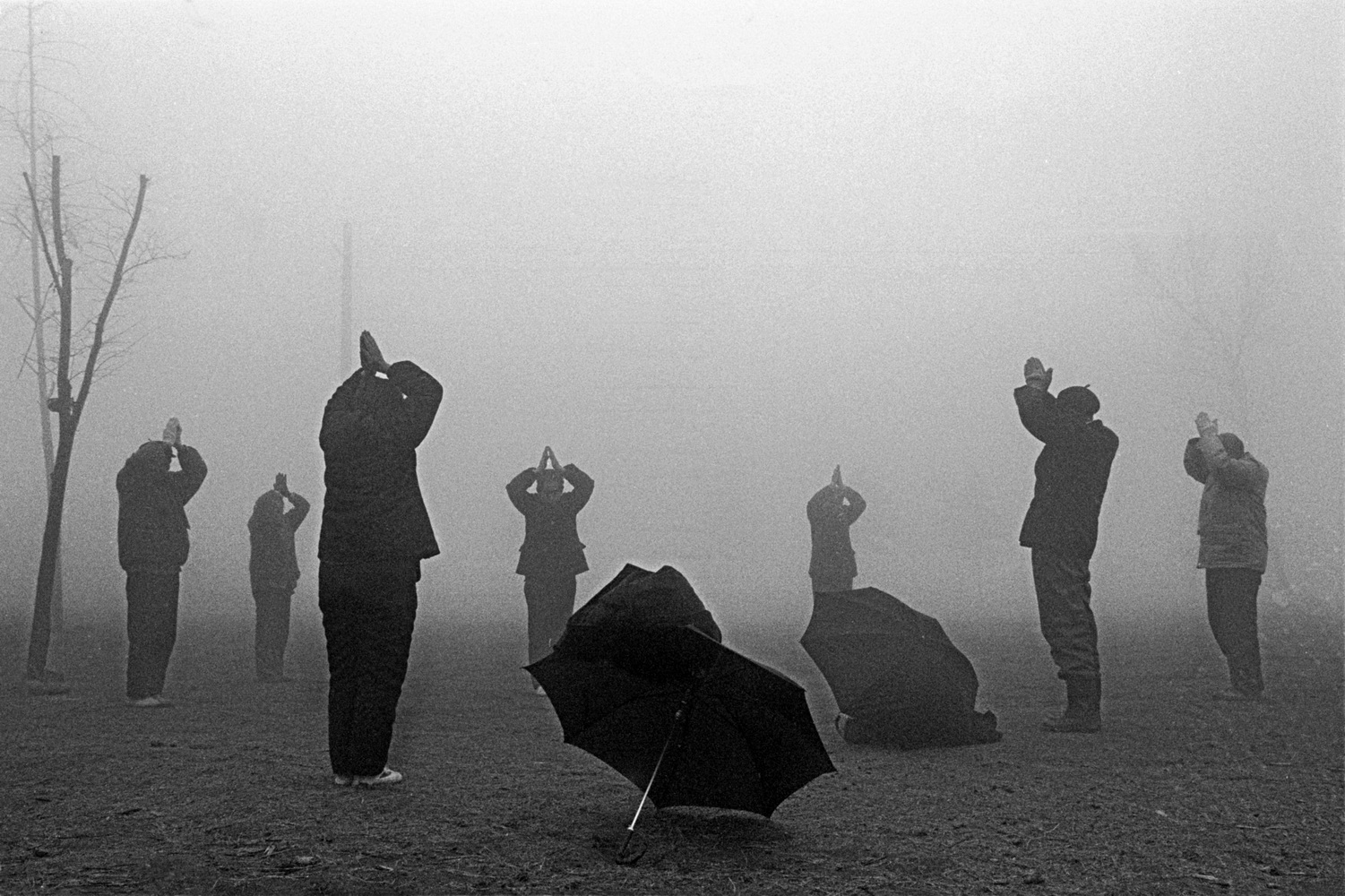
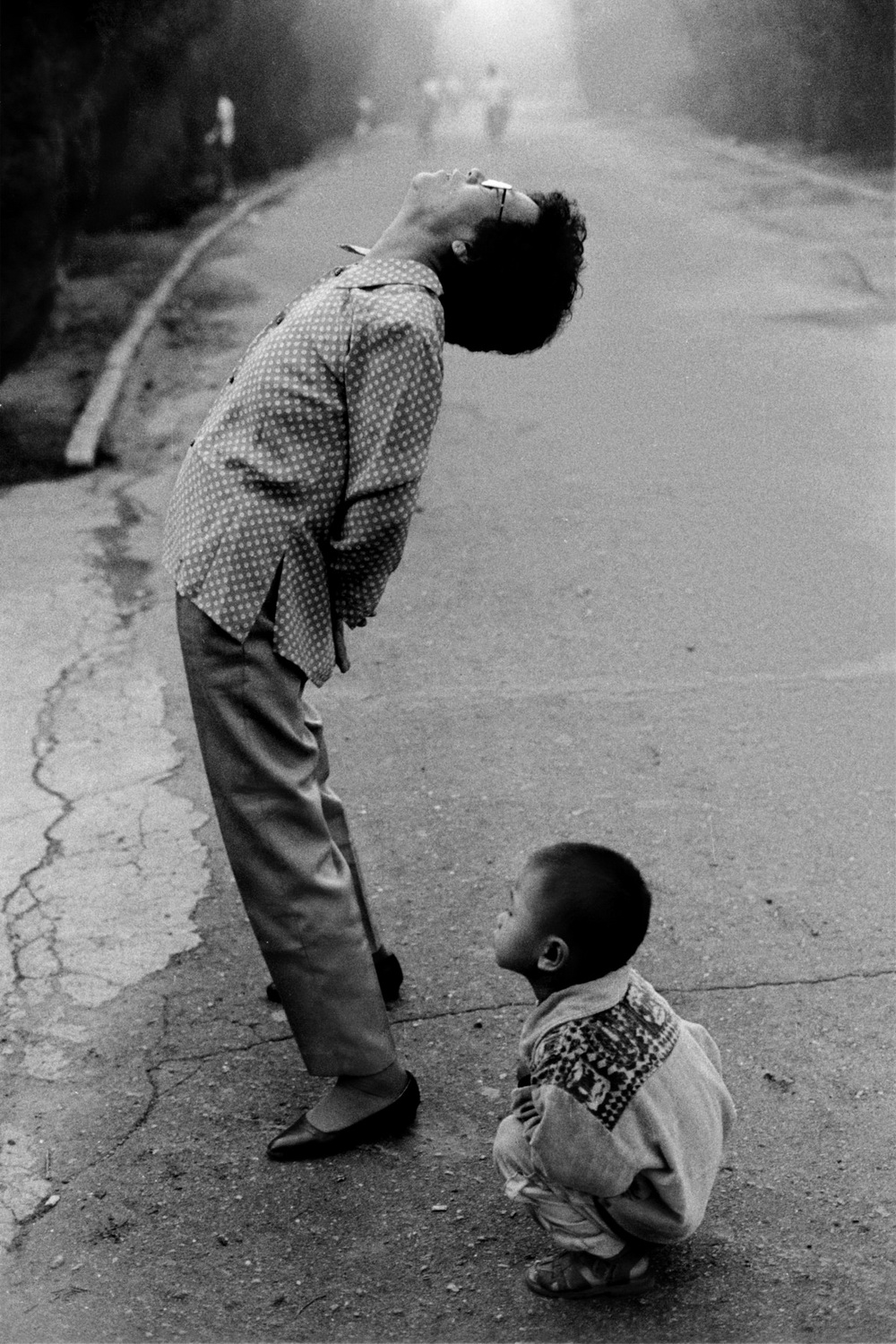
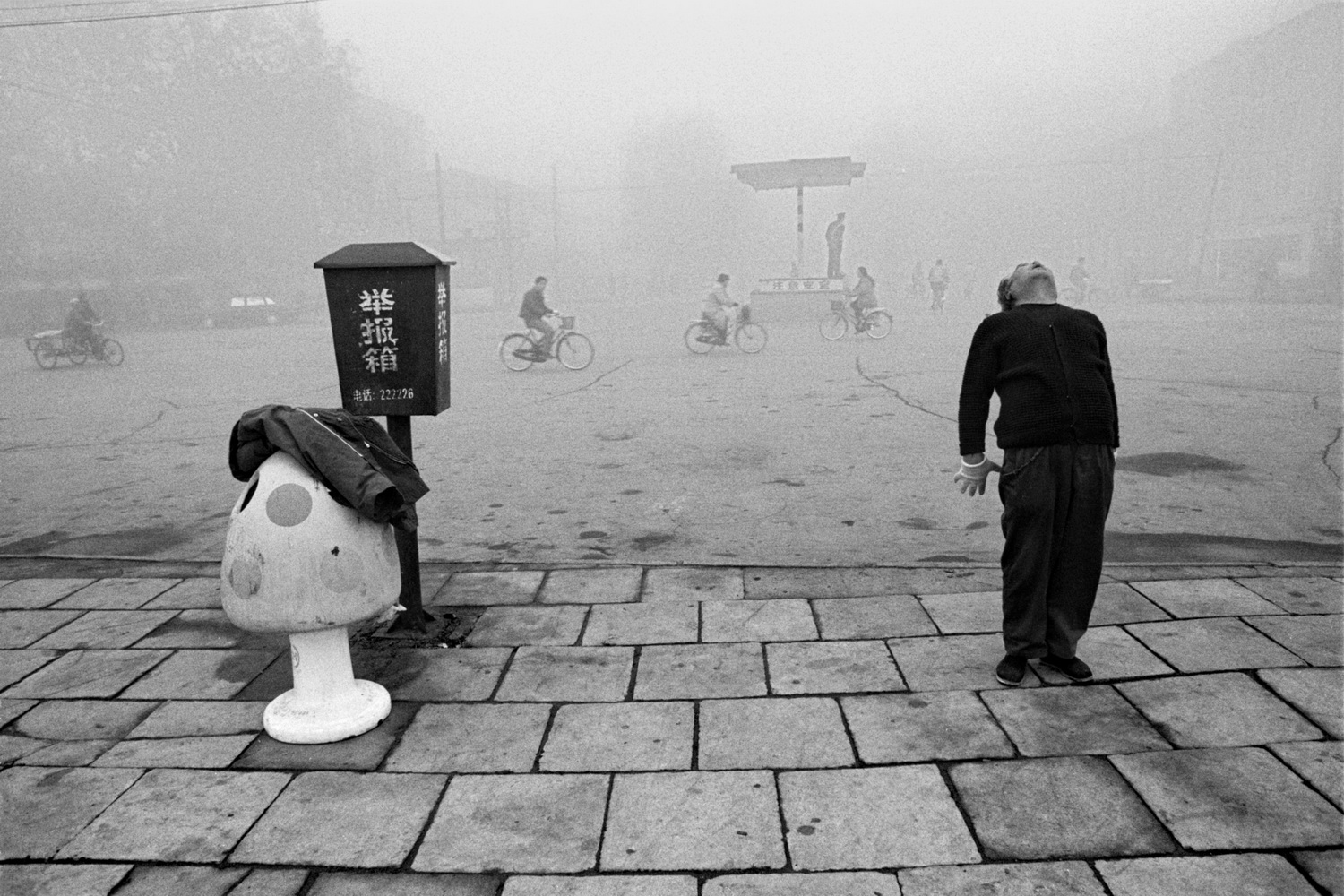

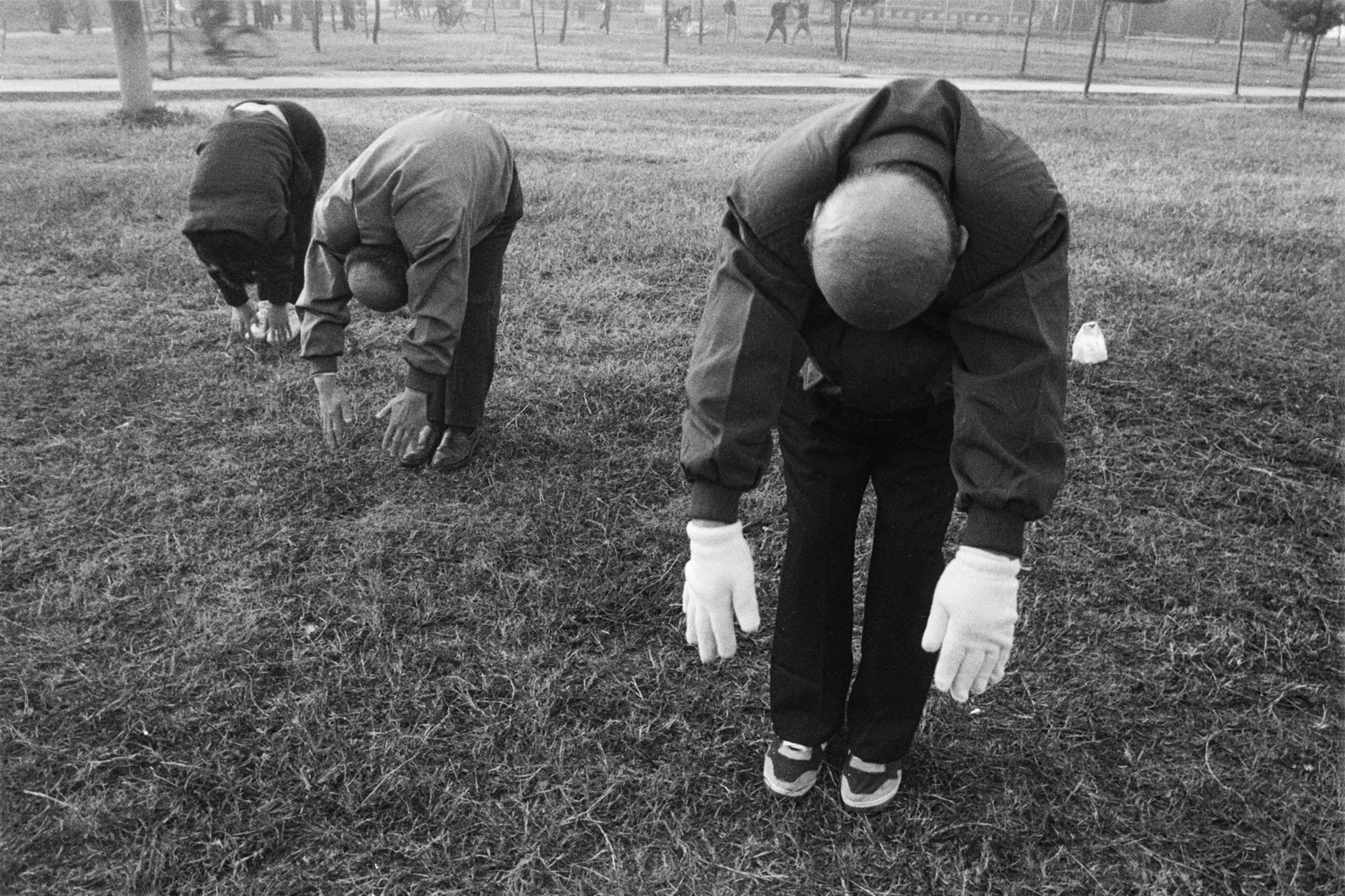

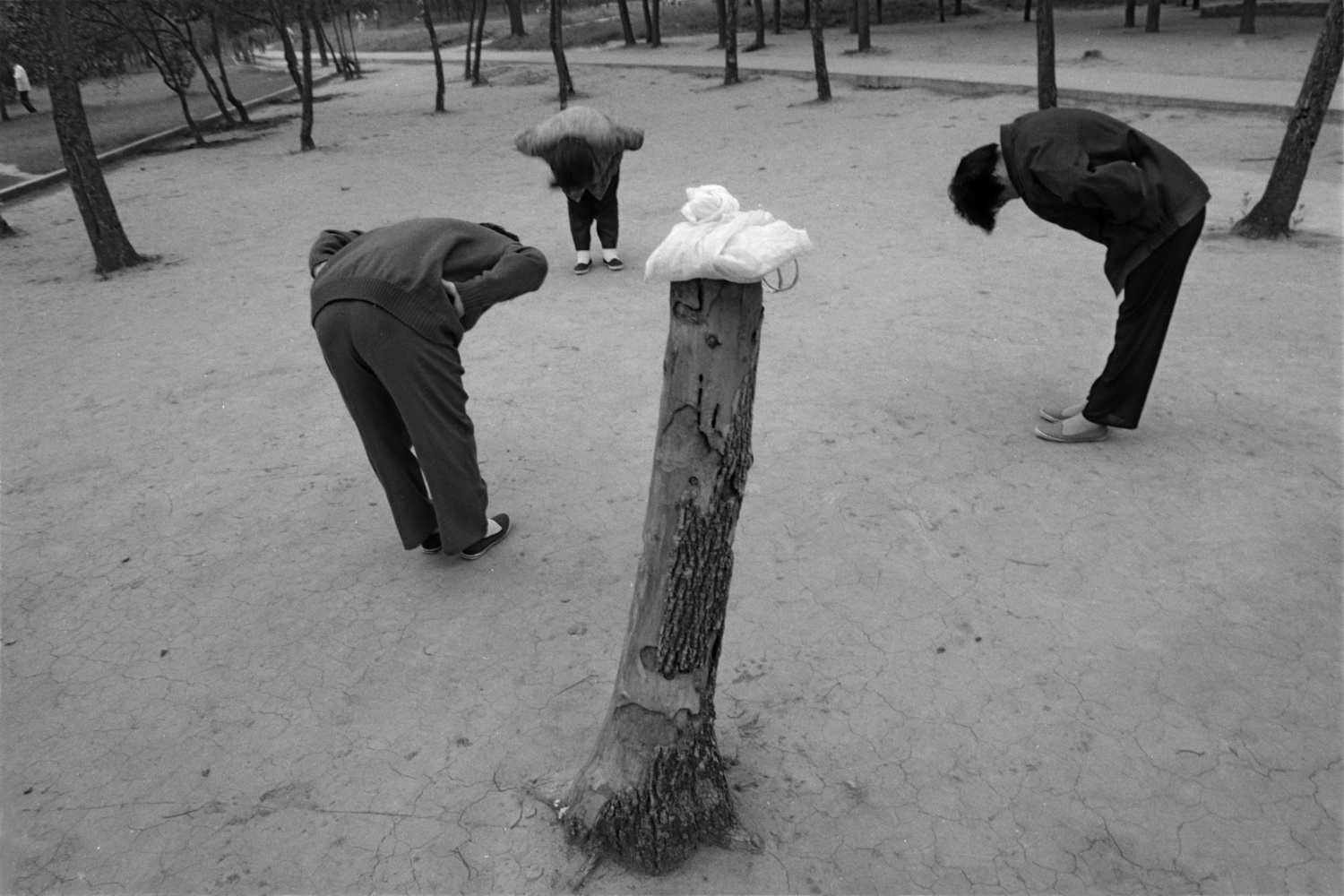
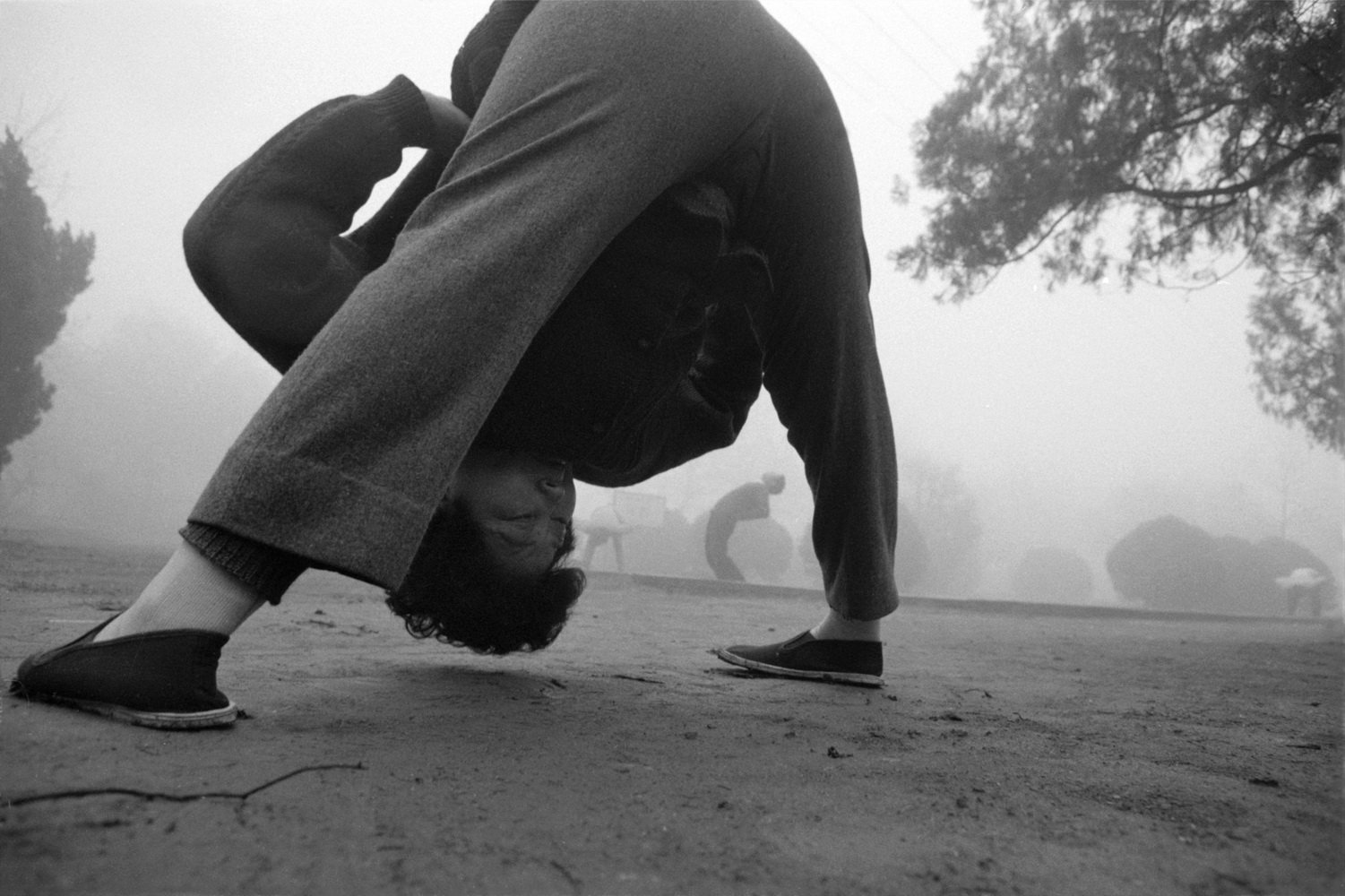
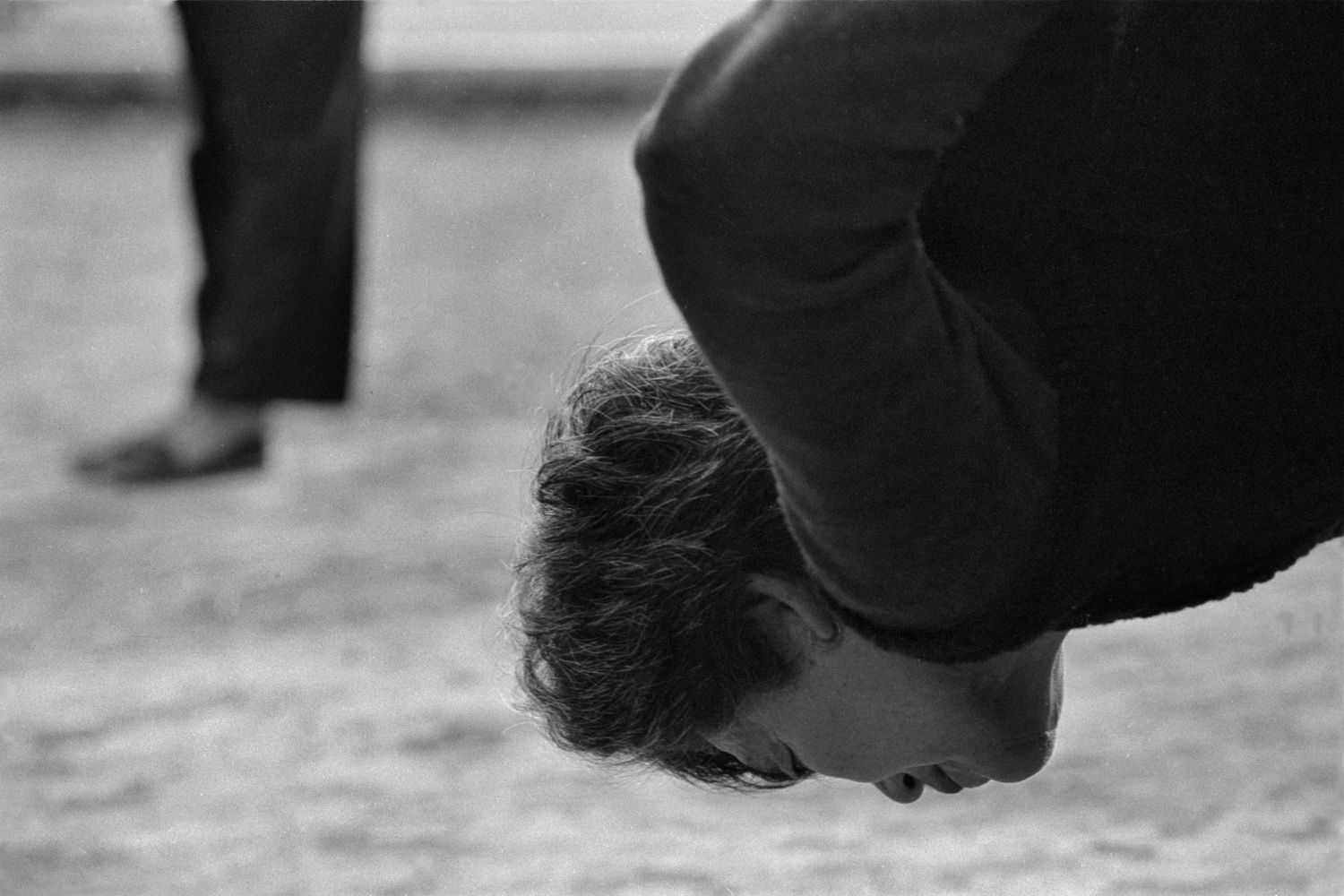
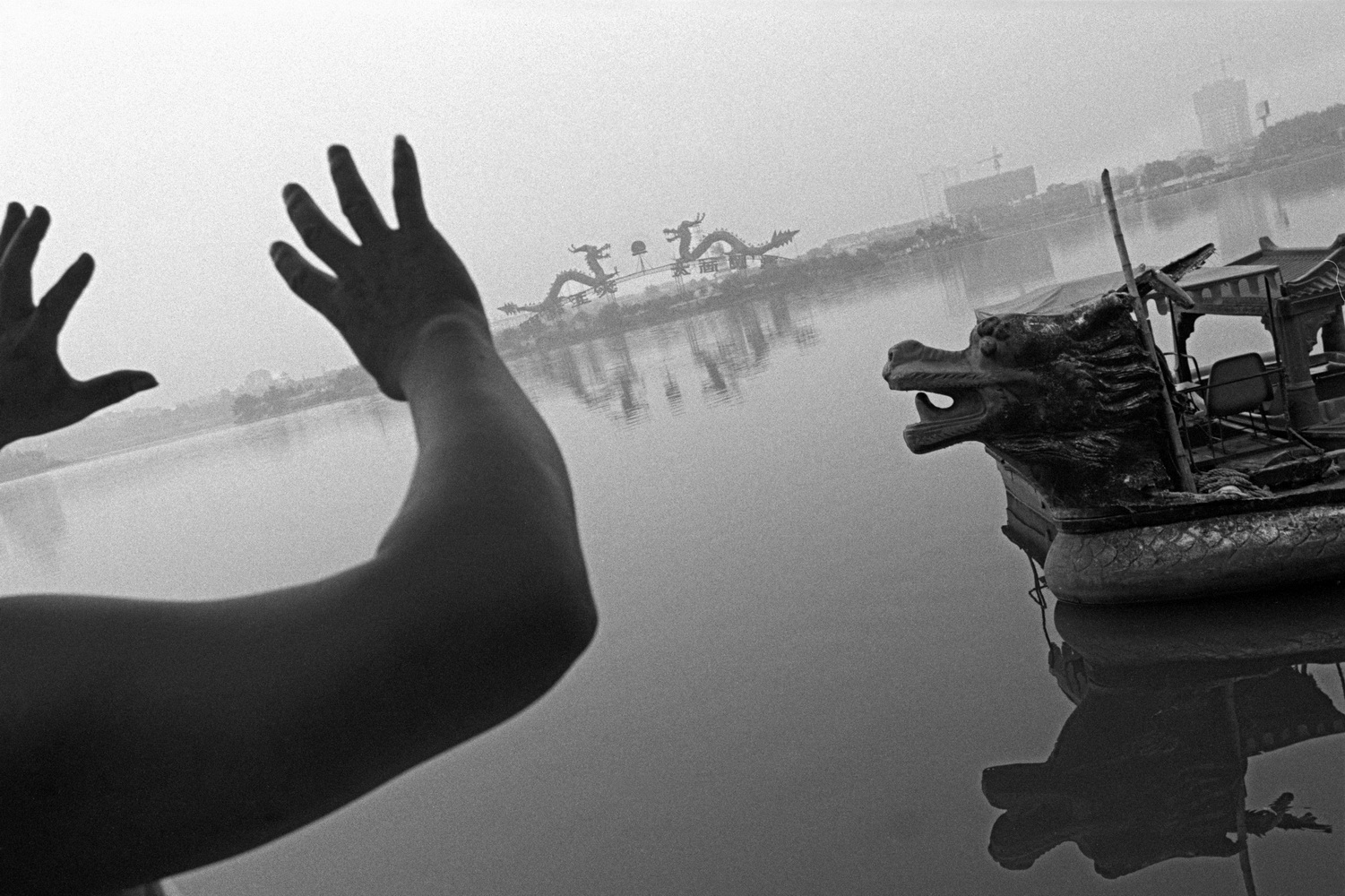
关于牛国政的摄影
摄影家牛国政来自中国的中心地带河南。这是一个有着悠久历史文化的地方,人文传统深厚,文化源远流长。河南人文的最新一枝则是当代摄影。用一句官方评语的套话:河南是中国的摄影大省。这里汇聚了大量中国最优秀的当代摄影家们,牛国政更是其中的佼佼者。
与大多数摄影家不一样,牛国政基本上以自己生活的地方为圆心,默默地用手中的照相机观察、记录周围的一切。在他的生活里,“异常”已经成为日常。牛国政凭借自己独特的眼光将“异常的日常”呈现出来,通过作品表达对异常的否定与批判,也是提出质疑。虽然他采取了看似非常朴实的在记录风格手法,但绝不只是简单意义上的记录。他在记录现象,而且往往是生活的怪象的同时,也是一个优秀的摄影表现者。他始终从独自的视角出发,来表现自己对于现实与生活的独特看法。
曾经有机会看到比较完整地反映了牛国政的摄影实践的作品光盘,发现他有不少系列是同时展开,长期耕耘。其中有些题材颇具时效性,比如环境污染等,但他并不在乎争一朝一夕之短长,而是沉稳地、沉静地去接近自己的题材,在这个接近过程中不断地深化自己的观点,完善自己的手法。这可能与他的工作与生活有关。他不是一个所谓的“职业摄影师”,摄影完全是他的业余爱好,因此他不用“职业摄影师”所喜欢的、所习惯的做“项目”的方式来“消灭”项目。他是像酿酒般地慢慢地、一步一步地深入下去,因此,他最后出来的一个个系列都非常深入,是一个经历了长期思考、修正与提炼的作品,最终的“成品”不会有那种急功近利的粗糙,值得人们细细体会。我想,即使是专业摄影师,也应该尽可能以这样的方式来展开工作,否则,他将来面对的总是充满了不满与遗憾的东西。
牛国政没有因为囿于一地而变得目光狭隘,而是出于对生命的无限敬重,将他对人生与生命的理解做出了阔大、豁达的表现,因而呈现出一种阔大的气象。最令人敬佩的是,他始终对于脚下的现实不离不弃,尽管他所面对的现实,无论如何无法令人展颜轻松。无论是小煤矿中艰难谋生的老少矿工,还是无分冬春把自己的睡梦当作了被子与床位的普通百姓,他们都是被牛国政视为自己的乡亲父老而加以小心翼翼的看待。这是一个有着自己的观点与立场的诚实的摄影家,他以自己的摄影为自己生活着的土地上的普通人民书写他们的异常却又平常的生活。即使现实如此沉重而压抑,而且异常成为了平常,但他仍然以一种努力保存生活原来质感的责任心与眼光,来提取一种结合了诗意与记录的摄影图像。这里所说的诗意,请绝对不要简单理解为唯美意义上的廉价的诗意,牛国政摄影中的“诗意”,是一种饱含了粗砺与磨难却又不曾屈服的生命意志与美学品格。
评论节选
《河南往事》(节录)
——李媚
《一路远去——且来看看这个河南摄影群体》(节录)
Photography of Niu Guozheng
Niu Guozheng, a Chinese Photographer from Henan, central China. His hometown is a place with deep cultural traditions and history moments. There is a saying that mentions Henan as the most competitive province of photography within China. A large number of contemporary photographers gather here, and Niu Guozheng is one of the best among them.
Unlike others, Niu Guozheng observes and records his life as the main inspiration for his work by using cameras. He uses his unique vision to show out “abnormal day”, analyze, criticize and question that unusual through his expression of the works. Although his representational style is simple, even plain, he is not just recording. He has those inexplicable phenomena recorded from objective perspectives; he is so talented to present his view towards reality.
Once I had a chance to see his complete photographic work archive, and I found he used to develop several different series in a same period. Some of the topics are related to hot issues such as environmental pollution, he usually devotes a longer time on exploring the story behind. Instead of getting instant benefits, making fame and noise, he keeps improving his approach deeply and deliberately. His attitude may relate to his life, he is a not so-called professional whereas photography is his hobby. Therefore, he does not follow what a normal photographer does; he does not present the way as others. There is not a mode of presenting in his presentation, but people can see a well-developed and thorough thinking process through his series. Thus, it evokes deeper thoughts from people who experienced it without showing any roughness. I suggest others, even a professional photographer, should develop work pieces in this way. Otherwise, his future life is going to be full of dissatisfaction and regret.
New Guozheng doesn’t turn into a narrow-minded person; rather, he constantly shows great respect for life with an open-mind. Moreover, the most admirable aspect is that he never gives up in photography though there is not any easy case. He is a photographer that holds his own point of view, and always be honest to what he sees. He is exhibiting the extraordinary life in a profound way. Even the life is so cumbersome and depressed, and abnormal becomes ordinary. Niu Guozheng is still working hard to keep the original sense of vision of life, to extract a combination of poetic and recorded photographic image from it.
Contradiction and Disintegration — Brief Evaluation about Photography in Henan (Extracts)
Past Memories of Henan (Extracts)
Along the Way— Looking at the Henan Photographer Group (Extracts)
Niu Guozheng serves in Pingding Mountain Public Security Bureau. He is peace, quiet, and possesses excellent insights, meticulous and concentration. Despite of having less experience, he has deep thoughts after reading various photographic precedents and theories carefully. He takes pictures through work, chances or spare time. The series is getting larger scale with precise illustration in deep inquiry. It was such a surprise when I visit his studio in Pingding Mountain 2002. In a few year times, his “the Prison”, “Coal Mines”, “Gangue Hill”, “Practice”, “Sleeping”, “Legacy of Cultural Revolution”, even “the Wire”. These are extremely outstanding pieces of photos with high quantity and quality, comparing to other photographers and their themes. Thus, it is evident that there are talented people hidden in Henan like Guozheng Niu does quietly.
1955年出生于河南省宝丰县。
1974年知青下乡
1977年南海舰队服役
1980年到河南省平顶山市公安局工作至今。
1986年开始从事摄影工作。
1987年-1997年拍摄《收审所》 中国河南省
1993年-1996年拍摄《小煤窑》 中国河南省
1994年-1997年拍摄《练功》 中国河南省
1999年-2005年拍摄《矸石山》 中国河南省
2002年-2004年拍摄《梦境》 中国河南省
2004年-2006年拍摄《百花园》 中国河南省
2005年-2007年拍摄《工场》、《狼烟》 中国河南省
展览:
2013年9月,沈阳中国工业博物馆邀请展《小煤窑》.
2013年8月,云南大理国际摄影展,联展作品《矸石山》.
2012年4月,美国科罗拉多州阿斯彭市Resnick 画廊,联展作品《工场》.
2011年9月,北京三影堂画廊主题展《冰+煤》.
2010年6月 新加坡YAVUZ fineart画廊联展,参展作品《狼烟》.
2009年9月,郑州,河南艺术中心艺术馆联展《天花乱坠》.
2009年5月,北京宛平,中国纪实摄影大展,个展《中国式锻炼》.
2009年4月 北京全国农业展览馆新馆,艺术北京2009当代艺术博览会.
2008年12月,上海, 汉庭·新城视环保摄影联展.
2008年9月,上海全摄影画廊个人回顾展.
2008年3月, 美国休斯顿摄影节, 多媒体联展《煤在中国》.
2007年9月,山西平遥联展《天花乱坠》.
2005年12月,广东省连州市国际摄影展 , 个展《梦境》.
2005年9月 ,山西平遥,联展《城之欲》,参展标题《练功》.
2005年9月 ,山西平遥, 个展《标语》.
2003年9月, 山西平遥 , 《乡土中原》主题展,参展标题《矸石山》.
2002年10月,北京中国美术馆 ,联展《小煤窑上的打工仔》.
收藏:
2011年12月,《矸石山》作品入编中国摄影师协会《当代中国摄影百家典藏》
2009年 《练功》,中国广东美术馆,2幅。
2007年 《练功》,美国旧金山现代艺术博物馆,2幅;
《狼烟》2幅;
《矸石山》1幅。
2005年 《练功》,中国河南博物馆,4幅。
2005年 《梦境》,中国广东美术馆2幅;
《小煤窑》中国广东美术馆3幅。
Niu Guozheng
1955 Born in Baofeng, Henan
Current Lives and works in Pingdingshan, Henan
Solo Exhibitions
2009 Chinese Exercise, Documentary Photography Exhibition, Beijing
2008 Niu Guozheng Photography Exhibition, OFOTO Gallery, Shanghai
2005 Dreams, Guangdong International Photography Exhibition, Lianzhou
2003 Slogans, Pingyao International Photography Festival, Pingyao, Shanxi
Group Exhibitions
2010 The Summer Solstice, OFOTO Gallery, Shanghai Open Frame-New Landscape Photography from China, Yavus Fine Art, Singapore
2009 Raining Flowers, Pingyao International Photography Festival, Pingyao, Shanxi Coal Gangue Dump, China National Agricultural Exhibition Center, Art Beijing Contemporary Art Fair, Beijing
2008 Exercises, “Chinese Folk Sports Photography Exhibition”, GuangdongArt Museum, Guangzhou Coal in China, Multimedia Group Exhibition, Houston International Photography Festival, Houston, USA
2005 Exercises, “For the City” Theme Exhibition, Pingyao International Photography Festival, Pingyao, Shanxi
2003 Dream and The Chinese People, Group Exhibition, Guangdong Art Museum Exhibition, Guangzhou Coal Gangue Dump, “Native Central Plains” Theme Exhibition, Pingyao International Photography Festival, Pingyao, Shanxi
2002 Small Coal, Group Exhibition, The Chinese Art Gallery, Beijing
Collections
2008 Exercises, Guangdong Art Museum
2007 Smoke, San Francisco Museum of Modern Art Exercises. Coal Gangue Dump
2006 Exercises, Henan Museum Dream, Guangdong Art Museum










关于牛国政的摄影
顾 铮
摄影家牛国政来自中国的中心地带河南。这是一个有着悠久历史文化的地方,人文传统深厚,文化源远流长。河南人文的最新一枝则是当代摄影。用一句官方评语的套话:河南是中国的摄影大省。这里汇聚了大量中国最优秀的当代摄影家们,牛国政更是其中的佼佼者。
与大多数摄影家不一样,牛国政基本上以自己生活的地方为圆心,默默地用手中的照相机观察、记录周围的一切。在他的生活里,“异常”已经成为日常。牛国政凭借自己独特的眼光将“异常的日常”呈现出来,通过作品表达对异常的否定与批判,也是提出质疑。虽然他采取了看似非常朴实的在记录风格手法,但绝不只是简单意义上的记录。他在记录现象,而且往往是生活的怪象的同时,也是一个优秀的摄影表现者。他始终从独自的视角出发,来表现自己对于现实与生活的独特看法。
曾经有机会看到比较完整地反映了牛国政的摄影实践的作品光盘,发现他有不少系列是同时展开,长期耕耘。其中有些题材颇具时效性,比如环境污染等,但他并不在乎争一朝一夕之短长,而是沉稳地、沉静地去接近自己的题材,在这个接近过程中不断地深化自己的观点,完善自己的手法。这可能与他的工作与生活有关。他不是一个所谓的“职业摄影师”,摄影完全是他的业余爱好,因此他不用“职业摄影师”所喜欢的、所习惯的做“项目”的方式来“消灭”项目。他是像酿酒般地慢慢地、一步一步地深入下去,因此,他最后出来的一个个系列都非常深入,是一个经历了长期思考、修正与提炼的作品,最终的“成品”不会有那种急功近利的粗糙,值得人们细细体会。我想,即使是专业摄影师,也应该尽可能以这样的方式来展开工作,否则,他将来面对的总是充满了不满与遗憾的东西。
牛国政没有因为囿于一地而变得目光狭隘,而是出于对生命的无限敬重,将他对人生与生命的理解做出了阔大、豁达的表现,因而呈现出一种阔大的气象。最令人敬佩的是,他始终对于脚下的现实不离不弃,尽管他所面对的现实,无论如何无法令人展颜轻松。无论是小煤矿中艰难谋生的老少矿工,还是无分冬春把自己的睡梦当作了被子与床位的普通百姓,他们都是被牛国政视为自己的乡亲父老而加以小心翼翼的看待。这是一个有着自己的观点与立场的诚实的摄影家,他以自己的摄影为自己生活着的土地上的普通人民书写他们的异常却又平常的生活。即使现实如此沉重而压抑,而且异常成为了平常,但他仍然以一种努力保存生活原来质感的责任心与眼光,来提取一种结合了诗意与记录的摄影图像。这里所说的诗意,请绝对不要简单理解为唯美意义上的廉价的诗意,牛国政摄影中的“诗意”,是一种饱含了粗砺与磨难却又不曾屈服的生命意志与美学品格。
评论节选
《矛盾与蜕变——粗看河南摄影》节录
——孙京涛
在我看来,牛国政的图像嬗变对河南乃至全国的纪实摄影家最具参照意义。牛国政不同于姜健,他不想让自己的图像只是一面现实的镜子。他也不同于田野,让图像完全成为内心主观情绪的附庸。他希望在主观和客观之间取得平衡,在记录与评价之间取得平衡,而这也正是大多数纪实摄影家使用的语言方式。
牛国政与他那个岁数的摄影师学摄影的经历恐怕大同小异,所以他初期的摄影“河南味”十足。但以我对这位兄长有限的了解,他是个沉静而且喜欢追根问底的人,否则他也不会去读贡布里希的书,更不会在其后的几组作品中尝试视觉语言的超越。我看过他拍摄的《矸石山》,这是典型的报道摄影的手法——在信息传递与视觉强度间取得平行。这是从上个世纪九十年代初盛行的“图片故事”的基本语言方式。我看到他拍摄的《监狱》,据说他用十几年的时间拍摄这个专题。这是一种摆荡在再现与表现之间的视觉语言——再现与表现、主观与客观、被动与主动、控制与放纵——这样的语言形态不统一存在于很多八十年代中期成名的纪实摄影家中。再后来,我看他的《练功》和《梦境》,这才是真正的牛国政式的摄影。他在记录,但他更在表现,他的镜头选择和影调选择都在为他对这件事情的个人评价服务。他在画框内对横向与纵向视觉元素的组合、配置、轻重处理、虚实处理让他的照片沉郁而生动、真实而荒诞。在他的镜头下,睡觉成了一种自以为是却又神秘莫测的生命意象,练功成了一种始于虔诚止于荒谬的宗教仪式。可以说,牛国政用细腻、偶然、突兀、疑问式的笔触赋予摄影另一种可能:摄影是一种提问的方式,而答案可能不在摄影中。河南摄影在纪实层面上的这种蜕变是非常有价值的。我们都知道,西方现代主义时期的艺术最重要的成就,就是对艺术语言的探索。而我们没有这样的历史经验可以依托,所以,不管是河南的摄影家,还是国内其他地域的摄影家,摄影语言的探索与补课,是必须的。重要的是,我们要有这种自觉意识。
牛国政与他那个岁数的摄影师学摄影的经历恐怕大同小异,所以他初期的摄影“河南味”十足。但以我对这位兄长有限的了解,他是个沉静而且喜欢追根问底的人,否则他也不会去读贡布里希的书,更不会在其后的几组作品中尝试视觉语言的超越。我看过他拍摄的《矸石山》,这是典型的报道摄影的手法——在信息传递与视觉强度间取得平行。这是从上个世纪九十年代初盛行的“图片故事”的基本语言方式。我看到他拍摄的《监狱》,据说他用十几年的时间拍摄这个专题。这是一种摆荡在再现与表现之间的视觉语言——再现与表现、主观与客观、被动与主动、控制与放纵——这样的语言形态不统一存在于很多八十年代中期成名的纪实摄影家中。再后来,我看他的《练功》和《梦境》,这才是真正的牛国政式的摄影。他在记录,但他更在表现,他的镜头选择和影调选择都在为他对这件事情的个人评价服务。他在画框内对横向与纵向视觉元素的组合、配置、轻重处理、虚实处理让他的照片沉郁而生动、真实而荒诞。在他的镜头下,睡觉成了一种自以为是却又神秘莫测的生命意象,练功成了一种始于虔诚止于荒谬的宗教仪式。可以说,牛国政用细腻、偶然、突兀、疑问式的笔触赋予摄影另一种可能:摄影是一种提问的方式,而答案可能不在摄影中。河南摄影在纪实层面上的这种蜕变是非常有价值的。我们都知道,西方现代主义时期的艺术最重要的成就,就是对艺术语言的探索。而我们没有这样的历史经验可以依托,所以,不管是河南的摄影家,还是国内其他地域的摄影家,摄影语言的探索与补课,是必须的。重要的是,我们要有这种自觉意识。
《河南往事》(节录)
——李媚
第二次去平顶山已经是2001年了。在平顶山呆了五天,下了五天的雪。每天从早到晚都在看底片。这次基本上算是把平顶山作者的图片看遍了。虽然其中不乏集体行动似的拍摄,但是,每个作者基本都有自己确定的方向,大家都对自己确定的选题投以一种散漫而长期的关注,拍摄方式基本纪实。小煤窑、集市、矸石山、中原饭场、乡村交通、民间风俗……最深的感触是,平顶山大多数作者似乎都有一种自然平和的草根姿态,尤其是牛国政、张惠宾等人。他们的照片与普通平民的生活姿态,每天买菜、做饭、上下班,一种平实自然市俗的苦乐,一种平静常态的耐性,一种不究其实地活着,朴素无奈安然自在,摄影者与照片中的人群,在一条平行线上,各自行走互不干涉,安然地淹没于芸芸众生中。他们的镜头是没有优越的,尤其是老牛,看他的照片,活生生一个智慧老道而又不失幽默的老牛跃然影像之中,苦乐哀叹自嘲充满民间智慧。虽然老牛的工作其实并不如百姓那样平常,难得的是自觉保持平常百姓的心态与价值观。要真仔细说中国市俗情景中的市民生活影像,老牛要算是排在前几位的。这个不显山露水的人,真正是中国实力派的摄影家。
《一路远去——且来看看这个河南摄影群体》(节录)
刘树勇
牛国政在平顶山公安局公干,人平和安静,心思细密,见识亦多,好定力。做摄影时间不长,但用心看过周围诸人做的图像,又将国中可以见到的各种有关图像研究的理论书籍翻来覆去地看过,心中暗自揣摸,且又不动声色,所谓深思熟虑不浮不躁。继而借工作之便,或者闲来无事,拎一相机在周边活动腿脚,似无远求。慢慢做成几个专题,其规模之大,图像之精到,探究之深入,2002年春时在平顶山老牛家中一下子看到,真是吃一大惊。在短短几年里,他拍成的《监狱》、《小煤窑》、《矸石山》、《练功》,《睡觉》、《文革遗迹》、甚至是《电线》,每一专题举出近百幅照片,放在国中摄影一界里与他人比比,或者与国中拍摄同一题材的摄影家比比,也真是叫人说不出话来。看国中那些做得几种图像,然后四处招摇浪得虚名的摄影家们的浮浅行径,再看看偏居一隅安静做事的牛国政,你就相信,这河南一地真是幽邃深密藏龙卧虎,让人小瞧不得。
COMMENT EXCERPTS
Photography of Niu Guozheng
By Gu Zheng
Niu Guozheng, a Chinese Photographer from Henan, central China. His hometown is a place with deep cultural traditions and history moments. There is a saying that mentions Henan as the most competitive province of photography within China. A large number of contemporary photographers gather here, and Niu Guozheng is one of the best among them.
Unlike others, Niu Guozheng observes and records his life as the main inspiration for his work by using cameras. He uses his unique vision to show out “abnormal day”, analyze, criticize and question that unusual through his expression of the works. Although his representational style is simple, even plain, he is not just recording. He has those inexplicable phenomena recorded from objective perspectives; he is so talented to present his view towards reality.
Once I had a chance to see his complete photographic work archive, and I found he used to develop several different series in a same period. Some of the topics are related to hot issues such as environmental pollution, he usually devotes a longer time on exploring the story behind. Instead of getting instant benefits, making fame and noise, he keeps improving his approach deeply and deliberately. His attitude may relate to his life, he is a not so-called professional whereas photography is his hobby. Therefore, he does not follow what a normal photographer does; he does not present the way as others. There is not a mode of presenting in his presentation, but people can see a well-developed and thorough thinking process through his series. Thus, it evokes deeper thoughts from people who experienced it without showing any roughness. I suggest others, even a professional photographer, should develop work pieces in this way. Otherwise, his future life is going to be full of dissatisfaction and regret.
New Guozheng doesn’t turn into a narrow-minded person; rather, he constantly shows great respect for life with an open-mind. Moreover, the most admirable aspect is that he never gives up in photography though there is not any easy case. He is a photographer that holds his own point of view, and always be honest to what he sees. He is exhibiting the extraordinary life in a profound way. Even the life is so cumbersome and depressed, and abnormal becomes ordinary. Niu Guozheng is still working hard to keep the original sense of vision of life, to extract a combination of poetic and recorded photographic image from it.
Contradiction and Disintegration — Brief Evaluation about Photography in Henan (Extracts)
-- Sun Jingtao
In my view, the illustration done by Niu Zhengguo can be seen as the most influential reference for other documentary photographers in Henan, even around in China. Different from Jiang Jian, he does not willing to make his images as a mirror of life. He is also different from Ye Tian, letting pictures become a vassal of subjective feeling. He is attempting a balance between subjective and objective, between recording and assessing. It is the most vulgar language that documentary photographers use.
Unsurprisingly, Niu Guozheng had the similar photographic study as the others in his age. As a result, it was full of “Henan style” in his early work. However, he is a quiet soul who likes to explore everything based on my limited knowing about him. Otherwise, he will not read the Gombrich's book, even attempt to exceed in the visual language in his later work. I have seen his “Gangue Hill” which is a typical photojournalism – balancing between information transmission and visual intensity. It is called "Photo Story" which was a popular basic language mode in the 90’s. I saw his photo-shooting “the Prison”, it is said that he spent a decade on this project. It is a visual language between reproduction and expression: reproduction and expression; subjective and objective; passive and active; control and indulgence. This disunity of language existed among most of the famous documentary photographers in the mid-80s. Then I saw his “Practice” and “Dream”, which are indeed in Niu’s style.
He records, but more focusing on expression. His lens and tone selection work for his personal evaluation of this event. The combination of horizontal and vertical visual elements, configuration, virtual-actual processing is making his picture gloomy but vivid, real but absurd. Sleeping becomes an opinionated but mysterious image of life, and practice becomes a religious ceremony, which begins in pious and ends with baloney. Niu Guozheng gives another possibility with delicate, incidental, unexpected, interrogative strokes: Photography is a way of questioning, but the answer may not be in it. Such a transformation in documentary photography from Henan province is valuable. As we know, the most significant achievement of the modern western art is to explore the language of art. Whereas we do not have, any experience relying on. Therefore, whether a photographer from Henan, or from other areas in China, it is always necessary to contemplate and to explore the language of photography. It is important that we should take in this consciousness.
Unsurprisingly, Niu Guozheng had the similar photographic study as the others in his age. As a result, it was full of “Henan style” in his early work. However, he is a quiet soul who likes to explore everything based on my limited knowing about him. Otherwise, he will not read the Gombrich's book, even attempt to exceed in the visual language in his later work. I have seen his “Gangue Hill” which is a typical photojournalism – balancing between information transmission and visual intensity. It is called "Photo Story" which was a popular basic language mode in the 90’s. I saw his photo-shooting “the Prison”, it is said that he spent a decade on this project. It is a visual language between reproduction and expression: reproduction and expression; subjective and objective; passive and active; control and indulgence. This disunity of language existed among most of the famous documentary photographers in the mid-80s. Then I saw his “Practice” and “Dream”, which are indeed in Niu’s style.
He records, but more focusing on expression. His lens and tone selection work for his personal evaluation of this event. The combination of horizontal and vertical visual elements, configuration, virtual-actual processing is making his picture gloomy but vivid, real but absurd. Sleeping becomes an opinionated but mysterious image of life, and practice becomes a religious ceremony, which begins in pious and ends with baloney. Niu Guozheng gives another possibility with delicate, incidental, unexpected, interrogative strokes: Photography is a way of questioning, but the answer may not be in it. Such a transformation in documentary photography from Henan province is valuable. As we know, the most significant achievement of the modern western art is to explore the language of art. Whereas we do not have, any experience relying on. Therefore, whether a photographer from Henan, or from other areas in China, it is always necessary to contemplate and to explore the language of photography. It is important that we should take in this consciousness.
Past Memories of Henan (Extracts)
By Li Mei
It was 2001 that I paid my second visit to Pingding Mountain. It has been snowing for five days during my sojourn. I watched film plates all day long, and I have discovered almost all illustrations from the authors of Pingding Mountain. Although there are several photographing showing collective characteristics, each author present unique direction. Each of them holds a long-term focus on their chosen subjects, with documentary based mode. "Coal mines, coal gangue, markets, rural transport, folk customs…". The peace and natural attitude blow my mind, especially from Niu Zhengguoand Zhang Huibin. Their photos show an extremely ordinary life of the public: shopping, cooking, traveling from a workplace. The photographer and other people in the picture were standing in a parallel line without any interference. The angle of the shooting is not superior, especially Niu Zhengguo. From his photography, people can encounter a wise man with a full sense of humor. If you want to have a serious discussion about scenes of Chinese public life, Zhengguo’s work is the top few. He is a real photographer with actual power.
Along the Way— Looking at the Henan Photographer Group (Extracts)
By Liu Shuyong
Niu Guozheng serves in Pingding Mountain Public Security Bureau. He is peace, quiet, and possesses excellent insights, meticulous and concentration. Despite of having less experience, he has deep thoughts after reading various photographic precedents and theories carefully. He takes pictures through work, chances or spare time. The series is getting larger scale with precise illustration in deep inquiry. It was such a surprise when I visit his studio in Pingding Mountain 2002. In a few year times, his “the Prison”, “Coal Mines”, “Gangue Hill”, “Practice”, “Sleeping”, “Legacy of Cultural Revolution”, even “the Wire”. These are extremely outstanding pieces of photos with high quantity and quality, comparing to other photographers and their themes. Thus, it is evident that there are talented people hidden in Henan like Guozheng Niu does quietly.


 豫公网安备 41019602002106号
豫公网安备 41019602002106号